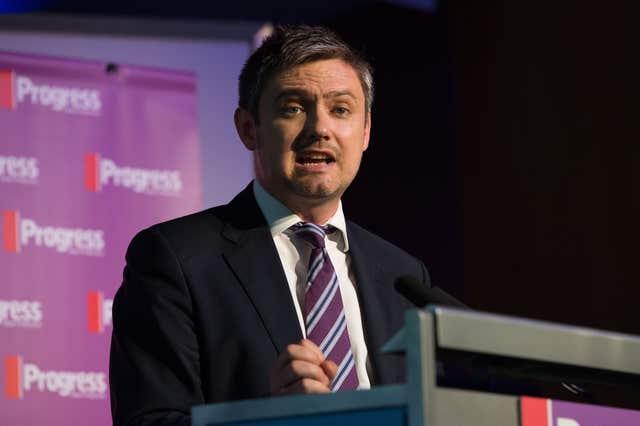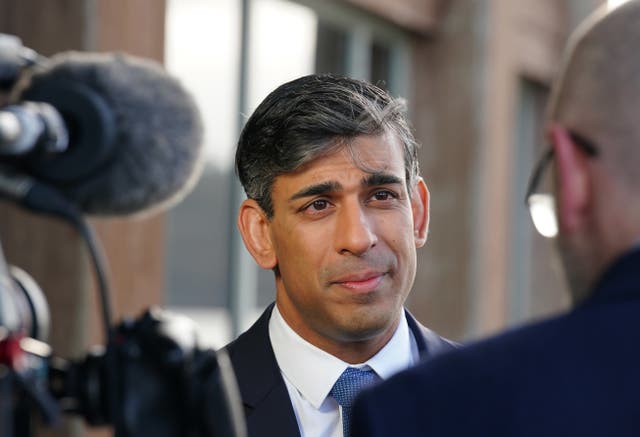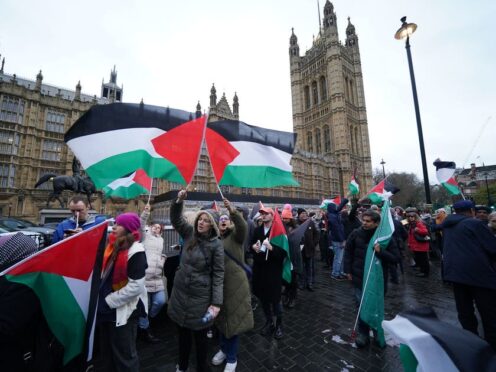Police should have the powers to “disperse” protests around Parliament, MPs’ offices and council chambers that they deem to be threatening, the Government’s political violence tsar has said.
Baron Walney, the UK Government’s adviser on political violence and disruption, said the “aggressive intimidation of MPs” by “mobs” was being “mistaken” for an “expression of democracy”.
The comments by Lord Walney come as the issue of MP safety has once again reared its head this week following a chaotic debate on the Israel-Hamas war.
The crossbench peer, who in December submitted a Government-commissioned review into how actions by political groups can “cross into criminality and disruption to people’s lives”, told BBC Radio 4’s Today programme he was calling for police forces to act “uniformly in stopping” protest outside MPs’ homes.
Lord Walney — known as John Woodcock when formerly an MP, first representing Labour before becoming an independent — added: “And I think we ought to be looking at those sites that are crucial to the functioning of democracy on a national or local level, like MPs’ offices, like local council chambers, like Parliament itself.

“(There should be) an easier and a faster process that, where those areas are being encircled by the kind of angry aggressive protests that have that implied sense of threat, as we are seeing, to give the police the ability to disperse them more quickly, which is clearly not happening at the moment.”
Home Secretary James Cleverly said he had not read Lord Walney’s report “in detail” but that the headline recommendations were “important”.
He told Sky News politicians should be able to make decisions “based on their judgment” and “not based on fear of reprisals”.
“They absolutely must and will be protected from that,” the Cabinet minister said.
Prime Minister Rishi Sunak said it was “simply unacceptable” for intimidation to threaten democracy.
Speaking during a tour of North Wales on Friday, Mr Sunak said: “Some of the scenes we have been seeing in recent months, particularly antisemitic behaviour, are appalling and unacceptable.
“That is why we are giving the police more powers and I expect them to use them to make sure we clamp down on all of this.”
No 10 said it did not know when Lord Walney’s report was likely to be published.
A Downing Street spokeswoman, asked about the peer’s bid to give police powers to disperse protests around Parliament, said: “We continue to keep in close contact with the police to ensure that they have the powers that they need to manage protests appropriately.
“And we are very clear that while protest is a cornerstone of our democracy, we must and will not allow that to turn into abuse, incitement of hatred and violence against others. That is unacceptable.”

Yvette Cooper, the Labour shadow home secretary, said protests outside MPs’ residences were “a disgrace”.
“It is a deliberate attempt at intimidation,” she told the Today programme.
Mr Cleverly said it was “nonsense” for protesters targeting the homes of MPs to deny they were seeking to intimidate.
He said police already have the powers that they need to stop protests outside MPs’ homes and offices, adding: “And we also want them to understand that they have our backing when they use those powers.”
“The only thing that politicians should fear is the ballot box,” he added.
Two serving MPs — Labour’s Jo Cox and Conservative Sir David Amess — have been murdered in the past eight years.
Sir Lindsay Hoyle, the Commons Speaker who has faced calls to resign after going against convention during the SNP’s opposition day debate on a Gaza ceasefire, explained that his motivation for widening the debate was fuelled by concern about MPs’ security due to the intimidation suffered by some parliamentarians during the Middle East debate.
Pleased to send my completed review to government officials today ahead of it formally going to PM and Home Secretary next month.Includes additional review of protests in UK since October 7 massacre. 100,000 words and 40 recommendations to be published in new year … pic.twitter.com/abpoavopsS
— Lord Walney (@LordWalney) December 22, 2023
Commons Leader Penny Mordaunt on Thursday confirmed authorities are investigating reports that a controversial pro-Palestinian message was projected onto Parliament during a demonstration that took place while MPs were debating the ceasefire motion on Wednesday.
Conservative MP Andrew Percy said the message “from the river to the sea, Palestine will be free” was projected onto the Elizabeth Tower, home to the Big Ben bell, despite planning permission not being granted by Parliament.
Mr Percy, a Jewish politician, said the phrase was a “genocidal call”, with some pro-Israel supporters arguing the slogan demands the eradication of the Israeli state.
The Home Secretary said he would not “impinge on operational decisions” by the police when asked whether officers should have stopped the words being displayed onto Parliament.
But he said the UK Government “completely rejected” the sentiment behind the “deeply offensive words”.
Downing Street also stressed the independence of the Metropolitan Police in handling Wednesday’s protest but said it was “wrong” for the controversial slogan to have been projected onto the 19th century building, which is a Unesco world heritage site.
